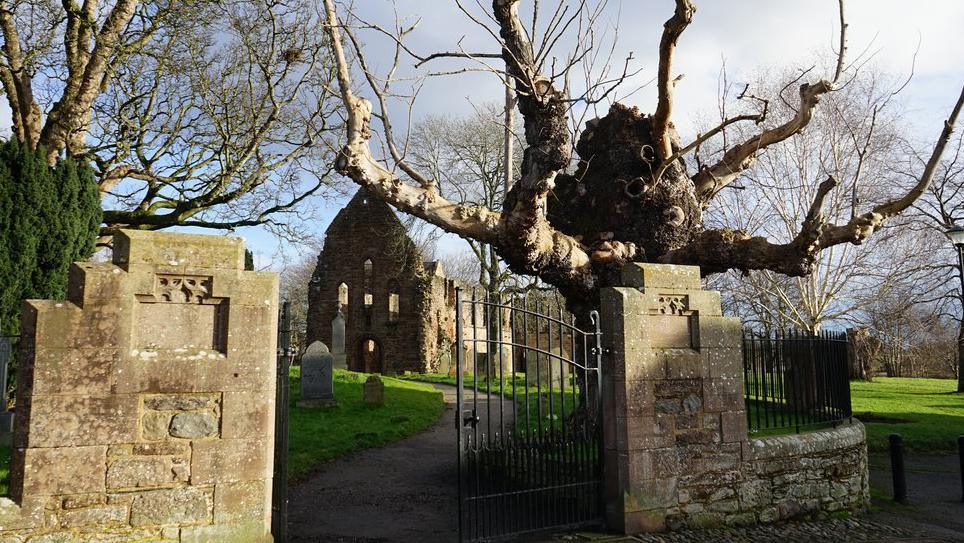Village to celebrate its ancient dying wych elm

At a glance
A celebration is to be held for what is believed to be Europe's oldest wych elm
The tree at the ruins of Beauly Priory in Beauly is almost 800 years old
But is has Dutch Elm Disease and is dying
Saturday's celebration will involve art and talks by writers and tree experts
- Published
A celebration is to be held for a dying ancient tree in a Highland village.
Beauly's wych elm is thought to be the oldest of its species in Europe at almost 800 years old.
References to the tree at the ruins of Beauly Priory have been found in records going back to medieval times.
But it has succumbed to Dutch Elm Disease and buds seen last year are believed to have been its last.
Saturday's celebration will feature artists, writers and talks from tree health experts.
Local people's stories about the tree will also be told during the event within the grounds of the priory.
Isabel McLeish, an artist involved in the celebration, said: “I am excited to have the opportunity to celebrate such a special and ancient tree with the speakers, artists and community of Beauly.
"It has been wonderful to learn more about wych elms and the different connections people have with this particular tree."
She added: "It is amazing to think about what the tree must have witnessed during it’s 800 years of life and I hope that our project can help capture the heritage and legacy of this wych elm.”
The event was produced by Circus Artspace as part of Scotland's Year of Stories.

Historic Environment Scotland (HES) laser-scanned the elm as part of work to document ancient Scottish trees.
HES has previously used the technology to create digital images of historic buildings.
Dutch Elm Disease is a fungal infection spread by tiny bark beetles. It can rapidly wither and kill healthy trees.
The disease arrived in the south of England in the 1960s and since then it has spread across much of the British mainland, massively reducing the elm population.
In recent years it has been moving west through Aberdeenshire and Moray and into the Highlands, but it was hoped that the lower density of elm trees, cooler climate and prevailing winds would slow down its progress.
In 2018, warm weather was blamed for speeding up the spread of Dutch Elm Disease in the Inner Moray Firth area of the Highlands.
Wych elm is the only elm regarded as being truly native to the UK, according to the Woodland Trust.
It usually grows in hilly or stoney woodlands, or near streams and ditches and is hardier than the English elm. Its name refers to how easily the wood can be bent.
- Published29 July 2021

- Published14 November 2019
